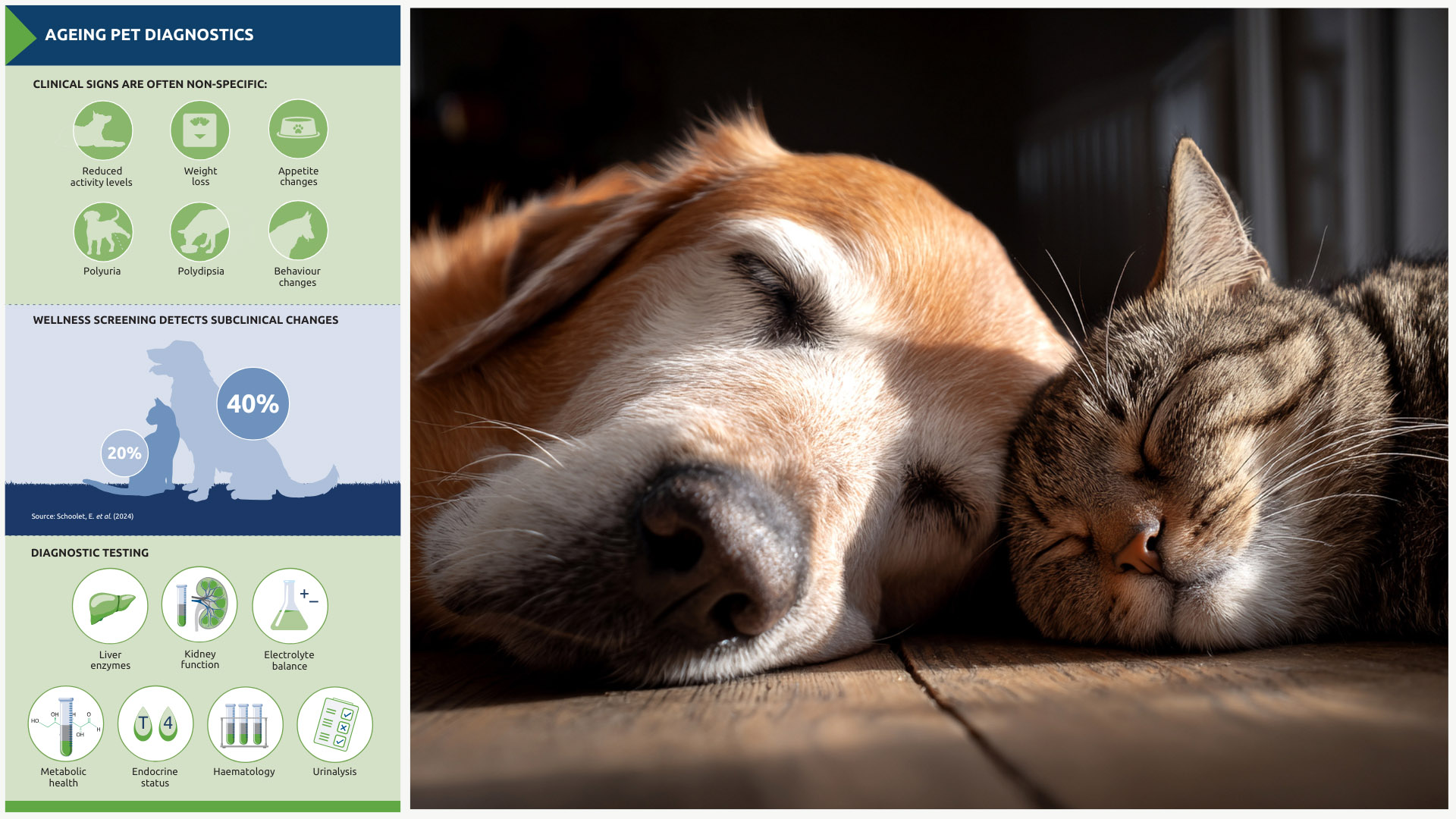Digital Adenocarcinoma Suggestive of Feline Lung – Digit Syndrome in a Domestic Shorthair Cat

Author: Sofia Clara Sacco DVM, PhD
Case presentation
An 11-year-old neutered male Domestic Shorthair cat was presented to a veterinary clinic with a two-month history of a digital lump. Amputation of the affected digit was performed, and the sample was submitted to NationWide Laboratories for evaluation.
Histological findings
In the dermis, there was an unencapsulate moderately demarcated and invasive neoplasm composed of cells arranged in variably sized, irregular tubules and papillae, supported by a moderate amount of fibrous connective tissue (desmoplasia). These tubules were lined by one to multiple layers of cuboidal to columnar neoplastic epithelial cells and contained central lakes of eosinophilic secretory material. The neoplastic cells showed moderate to abundant eosinophilic cytoplasm, oval nuclei, stippled chromatin and a single prominent magenta nucleolus. Moderate to marked anisocytosis and anisokaryosis were present. Six mitotic figures were observed per 10 HPF. Interspersed within the neoplasm, there was a moderate inflammatory infiltrate composed predominantly of foamy macrophages and neutrophils, with fewer lymphocytes and plasma cells, and rare mast cells. The neoplastic cells were positive for periodic acid–Schiff (PAS) staining, both for intracytoplasmic material and for secretory material within the lumina.
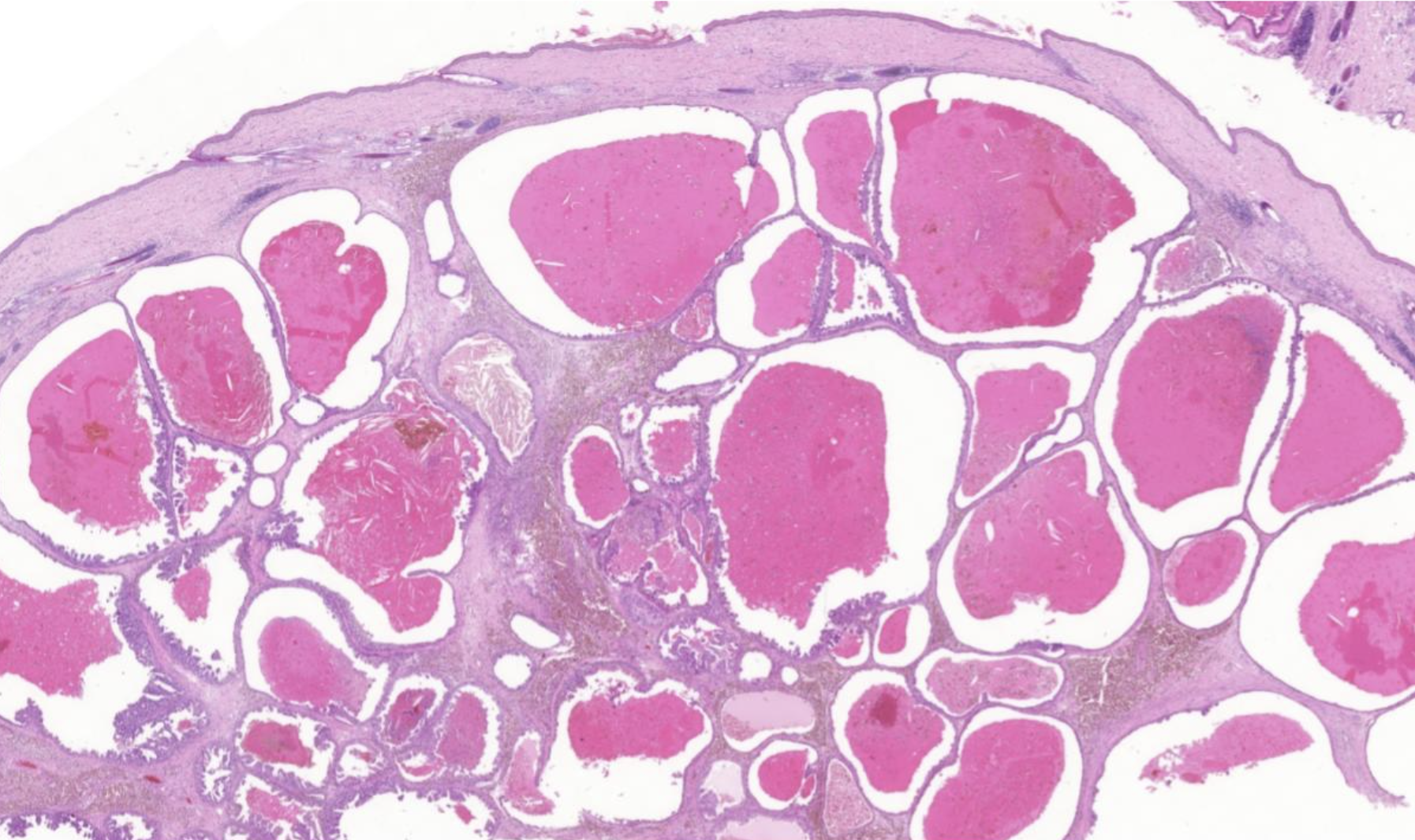 Irregular tubules, adenocarcinoma digit. H&E, 5X. | 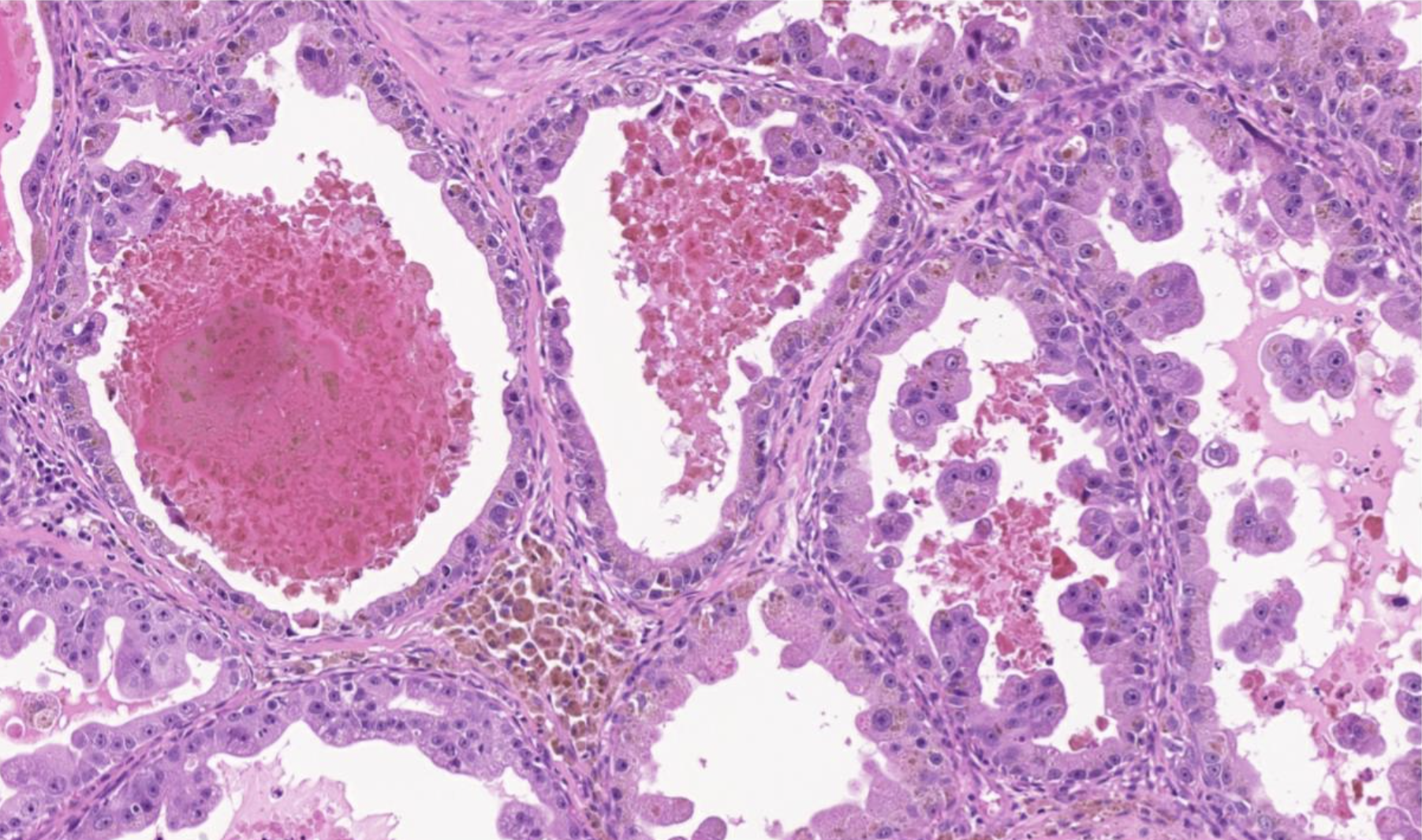 Irregular tubules, adenocarcinoma digit. H&E, 20X. |
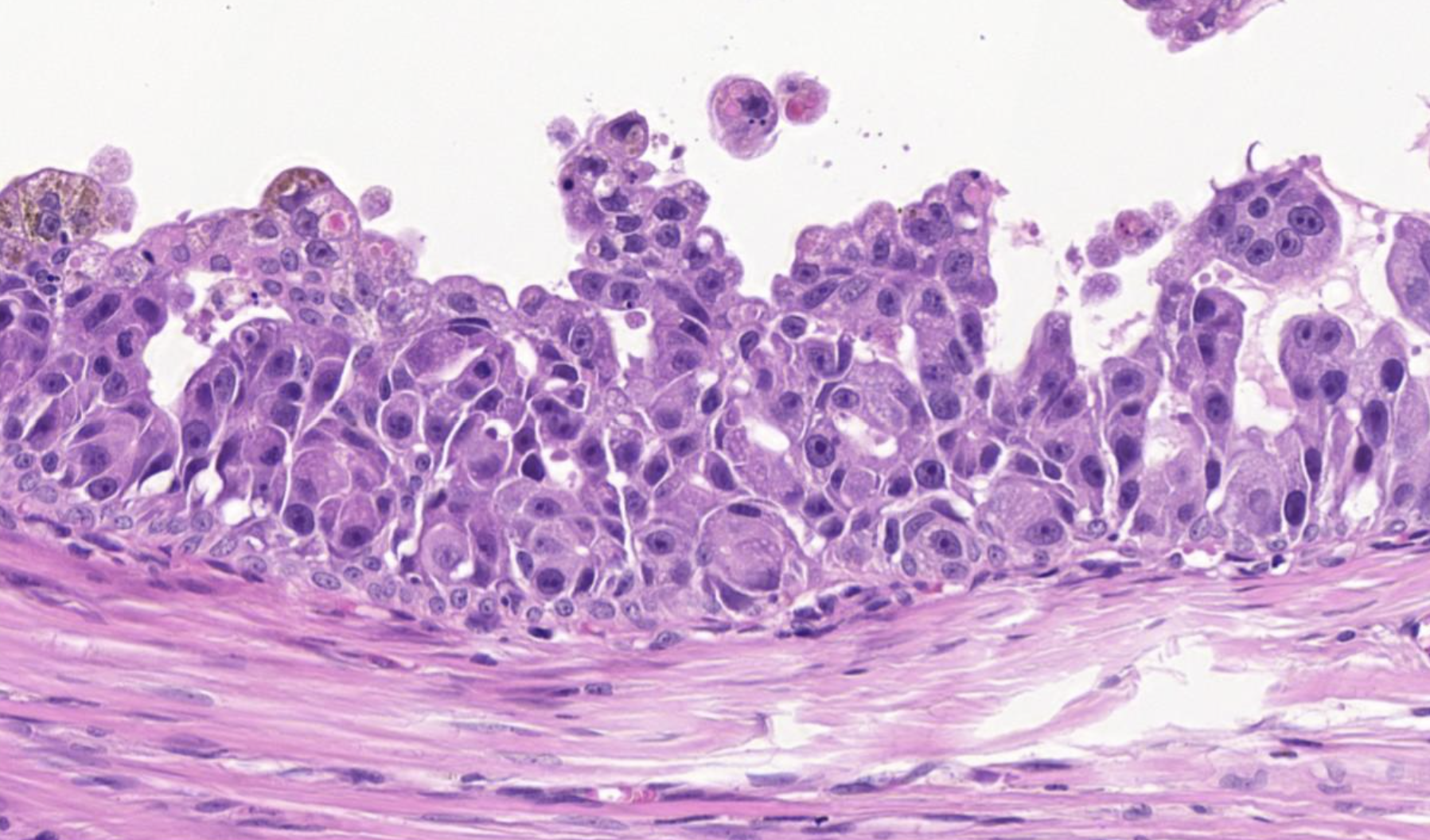 Marked atypia, adenocarcinoma digit. H&E, 40X. | 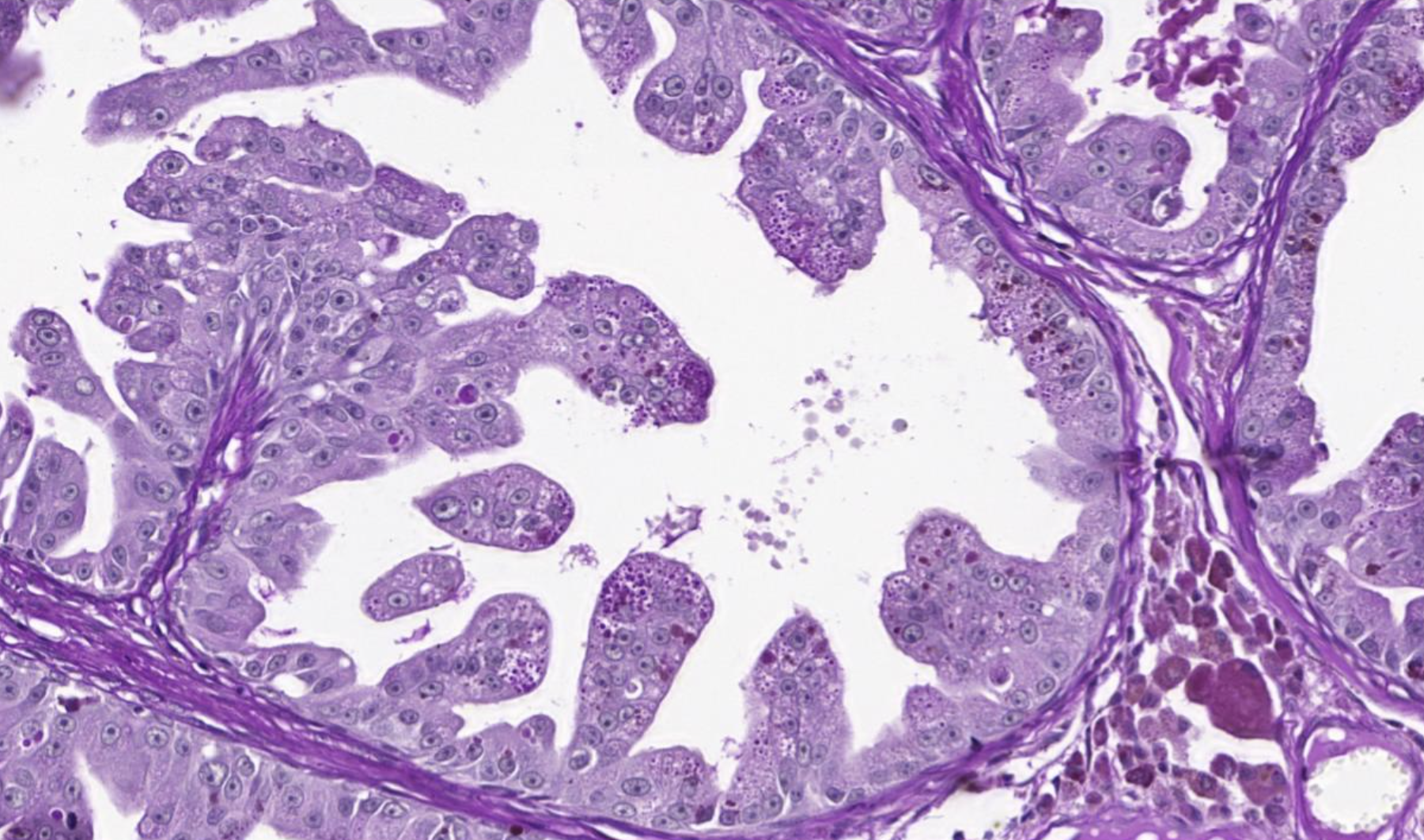 Positive for PAS staining intracytoplasmic material adenocarcinoma digit. H&E, 40X. |
Interpretation
A diagnosis of adenocarcinoma was established and based on the histological characteristics and PAS positivity of the cells; a metastatic neoplastic process was suspected.
Discussion
This neoplasm was consistent with an adenocarcinoma, characterised by PAS-positive intracytoplasmic material and PAS-positive secretory material, raising the suspicion of a metastatic pulmonary carcinoma. The main differential diagnosis in this case is primary apocrine or eccrine carcinoma of the digit. Nevertheless, primary adenocarcinomas of the digit are typically PAS-negative. Immunohistochemistry is recommended as an additional diagnostic tool to help confirm the origin of the neoplasm.
Cutaneous metastasis of internal tumours is rare in cats. Pulmonary adenocarcinoma associated with feline lung–digit syndrome is the most common cause of tumour metastasis to the skin in this species; other possible primary sites include the mammary glands and gastrointestinal tract.
Feline lung–digit syndrome describes an unusual metastatic pattern observed with various types of primary pulmonary tumours, where metastases occur in the distal phalanges of the limbs. Primary lung tumours in cats are often not detected based on clinical signs related to the thorax; rather, many cases present with signs referable to distant metastases. In cats presenting with lameness or digital inflammation, lung–digit syndrome should be included in the list of differential diagnoses, even in the absence of respiratory signs. Primary pulmonary carcinoma should be considered in any middle-aged to elderly cat presenting with digital disease.
References
1. Caswell JL, Williams KJ. Respiratory system. In: Maxie MG, editor. Jubb, Kennedy, and Palmer’s Pathology of Domestic Animals. Vol. 2. 6th ed. Philadelphia, PA: Elsevier Saunders; 2016. p. 495–500.
2. Francine Kirsch, Adriana Braun, Eliza Simone Viégas Sallis, Rosimeri Zamboni, Gustavo Brambatti, Claudia Giordani, Raqueli Teresinha França. Pulmonary carcinoma metastasis in a feline digit. Acta Scientiae Veterinariae. 2019;47(Suppl 1):424. doi:10.22456/1679-9216.95472
3. Goldfinch N, Argyle DJ. Feline lung-digit syndrome: Unusual metastatic patterns of primary lung tumours in cats. J Feline Med Surg. 2012 Mar;14(3):202–8. doi:10.1177/1098612X12439267. PMID: 22370862; PMCID: PMC10822433.
4. Santos IR, Raiter J, Lamego EC, et al. Feline pulmonary carcinoma: Gross, histologic, metastatic, and immunohistochemical aspects. Vet Pathol. Published online ahead of print September 13, 2022. doi:10.1177/03009858221122. Accessed October 12, 2022.

